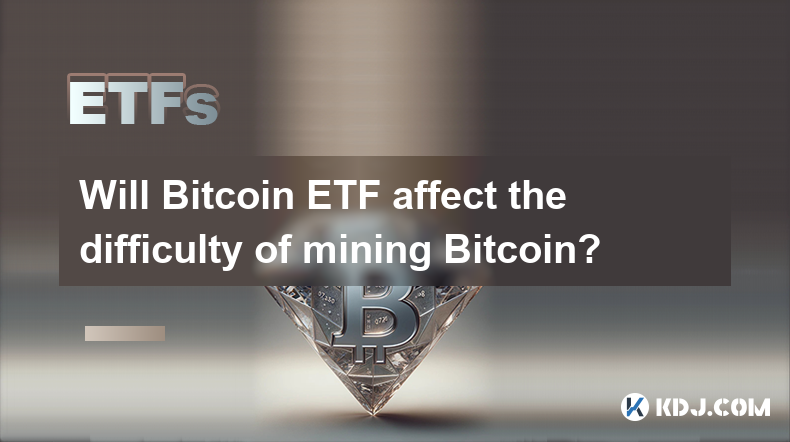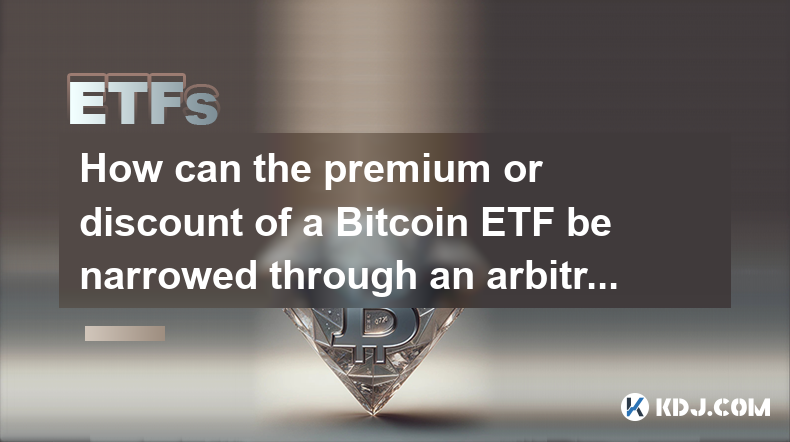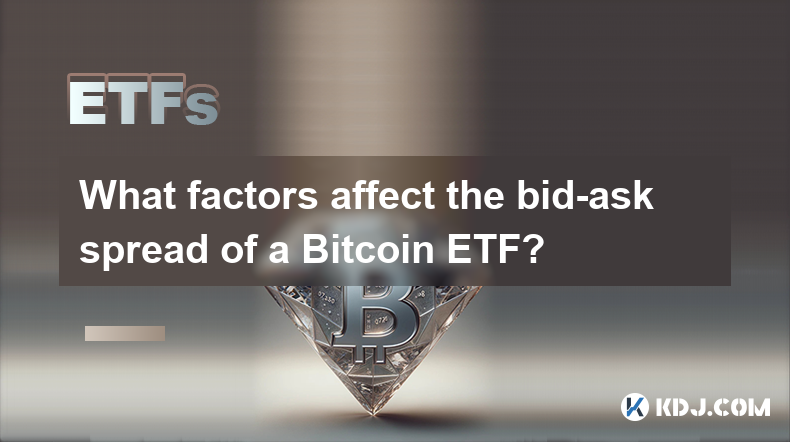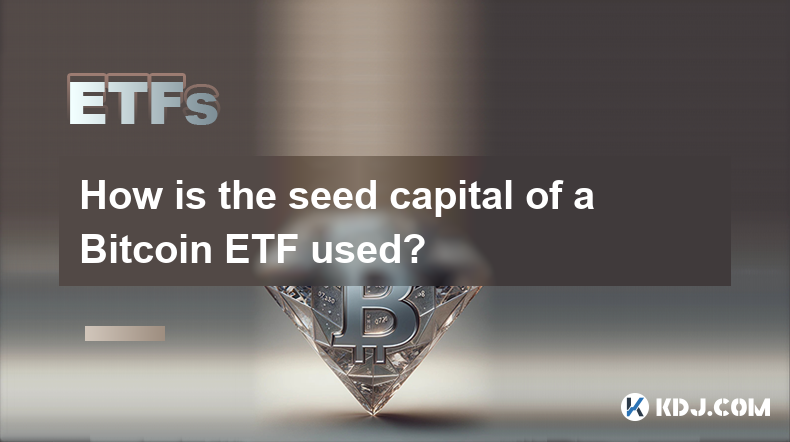-
 Bitcoin
Bitcoin $88,210.6273
1.11% -
 Ethereum
Ethereum $1,583.4647
-3.31% -
 Tether USDt
Tether USDt $1.0001
0.01% -
 XRP
XRP $2.0863
-1.39% -
 BNB
BNB $600.3082
-0.60% -
 Solana
Solana $139.2799
-0.26% -
 USDC
USDC $0.9999
0.00% -
 Dogecoin
Dogecoin $0.1615
0.68% -
 TRON
TRON $0.2460
0.59% -
 Cardano
Cardano $0.6259
-2.11% -
 Chainlink
Chainlink $13.1442
-2.79% -
 UNUS SED LEO
UNUS SED LEO $9.1314
-2.97% -
 Avalanche
Avalanche $19.9362
-0.27% -
 Stellar
Stellar $0.2483
-0.83% -
 Toncoin
Toncoin $2.9261
-3.27% -
 Shiba Inu
Shiba Inu $0.0...01245
-1.50% -
 Sui
Sui $2.2359
1.01% -
 Hedera
Hedera $0.1707
-0.15% -
 Bitcoin Cash
Bitcoin Cash $345.2366
1.60% -
 Hyperliquid
Hyperliquid $18.5882
3.98% -
 Litecoin
Litecoin $78.9028
-0.17% -
 Polkadot
Polkadot $3.7550
-4.00% -
 Dai
Dai $1.0000
-0.01% -
 Bitget Token
Bitget Token $4.4634
-1.87% -
 Ethena USDe
Ethena USDe $0.9992
-0.01% -
 Pi
Pi $0.6331
-0.71% -
 Monero
Monero $215.2673
-0.14% -
 Pepe
Pepe $0.0...08009
3.09% -
 Uniswap
Uniswap $5.2814
-2.61% -
 OKB
OKB $50.9064
-0.56%
Will Bitcoin ETF affect the difficulty of mining Bitcoin?
A Bitcoin ETF likely increases Bitcoin's price, indirectly impacting mining difficulty. Higher prices boost miner profitability, raising the hash rate and subsequently increasing difficulty via the network's automatic adjustment algorithm; conversely, lower prices decrease difficulty.
Feb 27, 2025 at 11:24 am

Will Bitcoin ETF Affect the Difficulty of Mining Bitcoin?
Key Points:
- An approved Bitcoin ETF (Exchange-Traded Fund) is likely to increase the demand for Bitcoin, potentially driving up its price.
- Increased Bitcoin price doesn't directly affect the Bitcoin mining difficulty algorithm.
- However, a higher price can indirectly influence mining difficulty through increased miner profitability and participation.
- Increased miner participation leads to a higher hash rate, which the Bitcoin network adjusts to maintain a consistent block generation time (approximately 10 minutes). This adjustment manifests as an increase in mining difficulty.
- Conversely, a decreased price could lead to miners becoming unprofitable and exiting the network, reducing the hash rate and resulting in a decrease in mining difficulty.
- The impact of an ETF on mining difficulty is complex and depends on several interconnected factors, including the magnitude of price increase, the regulatory environment, and the existing state of the Bitcoin mining market.
- The Relationship Between Bitcoin Price and Mining Difficulty:
The Bitcoin network employs a dynamic difficulty adjustment algorithm. This algorithm automatically adjusts the difficulty of mining new blocks approximately every two weeks (2016 blocks). The goal is to maintain a consistent block generation time of around 10 minutes. This is crucial for the network's security and stability. If the hash rate (the total computational power dedicated to mining) increases significantly, the blocks are found too quickly. The algorithm then increases the difficulty to slow down block creation. Conversely, if the hash rate decreases, the difficulty decreases to prevent excessively long block generation times.
The price of Bitcoin significantly influences miner profitability. A higher Bitcoin price makes mining more profitable, attracting new miners and encouraging existing ones to invest in more powerful mining hardware. This increased participation leads to a higher hash rate, and subsequently, an increase in mining difficulty. The opposite is true for a lower Bitcoin price; reduced profitability might force some miners to shut down operations, reducing the hash rate and leading to a decrease in mining difficulty.
However, it's vital to understand that the relationship isn't direct. The difficulty adjustment algorithm responds to changes in the hash rate, not the Bitcoin price directly. The price acts as an indirect influence, affecting the hash rate, which in turn affects the difficulty. A sudden price spike might not immediately translate to a difficulty increase; the algorithm requires time to register and respond to the change in the hash rate caused by increased miner participation. This lag is inherent in the design of the algorithm and prevents rapid, volatile fluctuations in mining difficulty. Furthermore, factors like energy costs and the efficiency of mining hardware play significant roles in miner profitability, adding further complexity to the interplay between price, hash rate, and mining difficulty. The algorithm is designed to be robust to such market fluctuations, ensuring the network's long-term stability regardless of short-term price volatility. The algorithm also takes into account the previous 2016 blocks' mining times to smooth out short-term fluctuations in hash rate.
- The Potential Impact of a Bitcoin ETF on Bitcoin Price and Mining Difficulty:
The approval of a Bitcoin ETF could significantly impact the price of Bitcoin. ETFs provide a regulated and accessible investment vehicle for institutional and retail investors, potentially attracting a substantial influx of capital into the Bitcoin market. This increased demand could drive up the price, potentially leading to a substantial increase in miner profitability.
As discussed previously, increased profitability attracts new miners and incentivizes existing ones to expand their operations. This leads to a rise in the hash rate, and consequently, an increase in mining difficulty. The magnitude of this increase would depend on several factors. Firstly, the size of the price increase following ETF approval would be a crucial determinant. A modest price increase might have a relatively minor impact on mining difficulty, whereas a dramatic surge could trigger a significant increase.
Secondly, the regulatory environment surrounding Bitcoin and mining plays a vital role. Favorable regulations could further encourage investment in Bitcoin mining, amplifying the impact on mining difficulty. Conversely, restrictive regulations could dampen the effect. The existing state of the Bitcoin mining market also matters. If the market is already saturated with miners operating near maximum capacity, the additional miners attracted by a price increase might have a less pronounced effect on the overall hash rate compared to a scenario with significant underutilized capacity. In essence, the effect of an ETF on mining difficulty is not a simple, linear relationship but a complex interplay of various market forces and regulatory factors.
- Other Factors Influencing Mining Difficulty:
Beyond the price of Bitcoin, several other factors influence the difficulty of mining. These include:
- Technological advancements in mining hardware: The development of more efficient and powerful ASIC (Application-Specific Integrated Circuit) miners directly impacts the hash rate. More efficient hardware allows miners to achieve higher hash rates at lower costs, influencing the overall network hash rate and subsequently the mining difficulty.
- Energy costs: The cost of electricity is a major expense for Bitcoin miners. Higher energy prices can reduce profitability, potentially leading to miners shutting down operations, thereby decreasing the hash rate and mining difficulty. Conversely, lower energy costs can enhance profitability, increasing the hash rate and mining difficulty.
- Government regulations: Governments worldwide are increasingly regulating the cryptocurrency industry. Regulations that restrict or ban mining operations can drastically reduce the hash rate, lowering the mining difficulty. Conversely, supportive regulations can boost the industry and increase the hash rate and mining difficulty.
- Geopolitical events: Global events, such as political instability or economic crises, can influence the price of Bitcoin and the willingness of miners to invest in and operate mining facilities. These events can indirectly impact mining difficulty through their effect on the hash rate.
- Miner centralization: The concentration of mining power in the hands of a few large mining pools can also influence mining difficulty. While not directly affecting the algorithm, a highly centralized mining landscape could potentially introduce vulnerabilities to the network's security and stability, which could, in turn, indirectly affect the network's response to hash rate changes and thus mining difficulty.
- The Long-Term Perspective:
Predicting the long-term impact of a Bitcoin ETF on mining difficulty is challenging due to the complex interplay of various factors. While an ETF is likely to increase demand and potentially the price of Bitcoin, leading to an increase in mining difficulty in the short to medium term, the long-term effect is less clear. Technological advancements in mining hardware and changes in energy costs could offset the impact of increased demand. Similarly, regulatory changes could significantly influence the trajectory of the Bitcoin mining landscape. The overall impact will be a dynamic equilibrium determined by the continuous interplay of these factors. The Bitcoin network's inherent self-regulating mechanism, the difficulty adjustment algorithm, will continue to ensure the network's security and stability irrespective of these market forces.
FAQs:
Q: Will a Bitcoin ETF guarantee an increase in Bitcoin's price?
A: While a Bitcoin ETF is expected to increase demand and potentially the price of Bitcoin due to increased accessibility and institutional investment, it's not a guarantee. Other market forces, economic conditions, and investor sentiment can still influence the price independently of the ETF's launch.
Q: Can mining difficulty be manipulated?
A: No, the Bitcoin mining difficulty is automatically adjusted by an algorithm based on the network's hash rate. It's decentralized and not controlled by any single entity, making manipulation extremely difficult, if not impossible.
Q: What happens if mining becomes unprofitable?
A: If mining becomes unprofitable due to factors like low Bitcoin price or high energy costs, some miners will likely shut down their operations. This will reduce the network's hash rate, leading to a decrease in mining difficulty. This is a self-regulating mechanism that ensures the network's long-term sustainability.
Q: How often does the Bitcoin mining difficulty adjust?
A: The Bitcoin mining difficulty adjusts approximately every two weeks (after every 2016 blocks are mined). The algorithm calculates the average block time over the previous 2016 blocks and adjusts the difficulty accordingly to maintain a target block time of around 10 minutes.
Q: Does a higher mining difficulty mean fewer Bitcoins are mined?
A: A higher mining difficulty means it's harder to mine a block, and therefore, fewer blocks are mined per unit of time. However, the rate at which new Bitcoins are introduced into circulation is still governed by the pre-defined Bitcoin protocol (halving events), not solely by mining difficulty. Higher difficulty only slows down the rate at which new Bitcoins are mined, not the total number eventually created.
Q: How does an increase in mining difficulty affect the security of the Bitcoin network?
A: A higher mining difficulty strengthens the security of the Bitcoin network. It makes it computationally more expensive and significantly harder for attackers to attempt a 51% attack (controlling more than half of the network's hash rate to potentially manipulate the blockchain). Therefore, an increase in mining difficulty, even if indirectly caused by an ETF, is generally considered positive for network security.
Disclaimer:info@kdj.com
The information provided is not trading advice. kdj.com does not assume any responsibility for any investments made based on the information provided in this article. Cryptocurrencies are highly volatile and it is highly recommended that you invest with caution after thorough research!
If you believe that the content used on this website infringes your copyright, please contact us immediately (info@kdj.com) and we will delete it promptly.
- PumpFun Has Transferred 95,934 SOL, Worth Approximately $13.34 Million, to Kraken
- 2025-04-22 11:40:14
- XenDex, a groundbreaking all-in-one decentralized exchange, is officially entering the Ripple blockchain
- 2025-04-22 11:40:14
- Barring a trade between now and June 25, the Miami Heat will have the 20th pick in the NBA Draft.
- 2025-04-22 11:35:12
- BetMGM Bonus Code WTOP1500 Unlocks a $150 Bonus or $1,500 First Bet Offer
- 2025-04-22 11:35:12
- JA Mining - a platform that makes Dogecoin mining as easy as shopping
- 2025-04-22 11:30:11
- Taiwan's Financial Supervisory Commission (FSC) Has Teamed with the Central Police University
- 2025-04-22 11:30:11
Related knowledge

What is the difference in returns between long-term holding of a Bitcoin ETF and holding Bitcoin directly?
Apr 09,2025 at 04:15am
When considering the difference in returns between long-term holding of a Bitcoin ETF and holding Bitcoin directly, it's essential to understand the nuances and factors that affect each investment option. Both approaches have their unique advantages and potential drawbacks, which can significantly impact the overall returns over time. Understanding Bitc...

How is the "roll cost" of a futures Bitcoin ETF generated?
Apr 08,2025 at 01:22pm
The 'roll cost' of a futures Bitcoin ETF is a critical concept for investors to understand, as it directly impacts the performance of the ETF. In this article, we will delve into the mechanics of how the roll cost is generated, exploring the underlying processes and factors that contribute to this cost. Understanding Futures ContractsFutures contracts a...

How can the premium or discount of a Bitcoin ETF be narrowed through an arbitrage mechanism?
Apr 09,2025 at 12:07am
Arbitrage mechanisms play a crucial role in narrowing the premium or discount of a Bitcoin Exchange Traded Fund (ETF). Understanding how these mechanisms work can provide valuable insights into the dynamics of Bitcoin ETFs and their relationship with the underlying asset. This article will delve into the specifics of how arbitrage can be used to align t...

What factors affect the bid-ask spread of a Bitcoin ETF?
Apr 08,2025 at 08:50pm
The bid-ask spread of a Bitcoin Exchange Traded Fund (ETF) is a critical metric that investors and traders closely monitor. It represents the difference between the highest price a buyer is willing to pay (bid) and the lowest price a seller is willing to accept (ask). Several factors influence this spread, and understanding them can help investors make ...

How is the seed capital of a Bitcoin ETF used?
Apr 10,2025 at 02:15pm
The seed capital of a Bitcoin ETF plays a crucial role in the establishment and operation of the fund. This initial investment is used to create the fund's underlying assets, manage operational costs, and ensure the ETF can start trading on an exchange. Understanding how this seed capital is utilized provides insight into the mechanics of Bitcoin ETFs a...

What is the difference between "physically backed" and "synthetic" Bitcoin ETFs in terms of holding assets?
Apr 10,2025 at 04:56pm
Bitcoin Exchange Traded Funds (ETFs) have become a popular way for investors to gain exposure to the cryptocurrency market without directly owning the underlying asset. There are two primary types of Bitcoin ETFs: physically backed and synthetic. Understanding the differences between these two types, particularly in terms of how they hold assets, is cru...

What is the difference in returns between long-term holding of a Bitcoin ETF and holding Bitcoin directly?
Apr 09,2025 at 04:15am
When considering the difference in returns between long-term holding of a Bitcoin ETF and holding Bitcoin directly, it's essential to understand the nuances and factors that affect each investment option. Both approaches have their unique advantages and potential drawbacks, which can significantly impact the overall returns over time. Understanding Bitc...

How is the "roll cost" of a futures Bitcoin ETF generated?
Apr 08,2025 at 01:22pm
The 'roll cost' of a futures Bitcoin ETF is a critical concept for investors to understand, as it directly impacts the performance of the ETF. In this article, we will delve into the mechanics of how the roll cost is generated, exploring the underlying processes and factors that contribute to this cost. Understanding Futures ContractsFutures contracts a...

How can the premium or discount of a Bitcoin ETF be narrowed through an arbitrage mechanism?
Apr 09,2025 at 12:07am
Arbitrage mechanisms play a crucial role in narrowing the premium or discount of a Bitcoin Exchange Traded Fund (ETF). Understanding how these mechanisms work can provide valuable insights into the dynamics of Bitcoin ETFs and their relationship with the underlying asset. This article will delve into the specifics of how arbitrage can be used to align t...

What factors affect the bid-ask spread of a Bitcoin ETF?
Apr 08,2025 at 08:50pm
The bid-ask spread of a Bitcoin Exchange Traded Fund (ETF) is a critical metric that investors and traders closely monitor. It represents the difference between the highest price a buyer is willing to pay (bid) and the lowest price a seller is willing to accept (ask). Several factors influence this spread, and understanding them can help investors make ...

How is the seed capital of a Bitcoin ETF used?
Apr 10,2025 at 02:15pm
The seed capital of a Bitcoin ETF plays a crucial role in the establishment and operation of the fund. This initial investment is used to create the fund's underlying assets, manage operational costs, and ensure the ETF can start trading on an exchange. Understanding how this seed capital is utilized provides insight into the mechanics of Bitcoin ETFs a...

What is the difference between "physically backed" and "synthetic" Bitcoin ETFs in terms of holding assets?
Apr 10,2025 at 04:56pm
Bitcoin Exchange Traded Funds (ETFs) have become a popular way for investors to gain exposure to the cryptocurrency market without directly owning the underlying asset. There are two primary types of Bitcoin ETFs: physically backed and synthetic. Understanding the differences between these two types, particularly in terms of how they hold assets, is cru...
See all articles






















































































